What is a Hydraulic Bolt Tensioner?
A Hydraulic Bolt Tensioner is a Power Tool that is used to stretch a bolt or stud in order to allow for the tightening of the nut against the flange or joint on which it is placed. This tool must apply a controlled amount of tensioning force on the fastener to ensure that sufficient tightening of the joint occurs and yet does not exceed the yield strength of the bolt.

Working Principle of a Hydraulic Bolt Tensioner:
A Bolt Tensioner has the following components apart from using a Hydraulic power pack
- A Reaction bridge
- A Load Cell
- A Puller bar
- Couplers and ports for hydraulic hoses
- A Nut Rotator
- A Gear Drive or a Tommy Bar to rotate the Nut
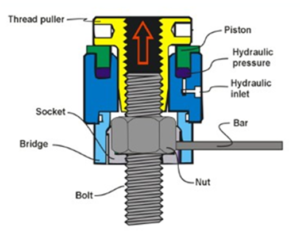
A Hydraulic Bolt tensioner works with a pump (pneumatic or electric) to do the following:
- The Bolt or stud is measured and the appropriate tensioning force and size of the bolt tensioner are derived.
- The Nut rotator is mounted on the Nut and the bridge is mounted on the stud and it is ensured that the reaction is levied on the flange or surrounding uniformly
- The load cell is placed on the bridge and the hoses are connected to the ports.
- The puller bar is rotated on the threaded portion of the stud or bolt and the pressurization begins.
- The fluid fills and pressurizes the load cell, which is a cylinder with a ram.
- The ram exerts pressure on the puller bar, which in return pulls the stud.
- The stud is now stretched and a gap is created between the nut and its resting point.
- This is used to rotate the nut and tighten it.
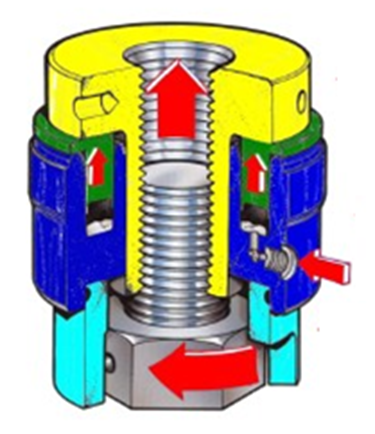
Design of Hydraulic Bolt Tensioners:
The design of a hydraulic bolt tensioner encompasses several key components, including a hydraulic cylinder, a piston, a load cell, a hydraulic pump, and a hydraulic hose.
The hydraulic cylinder is the main component responsible for generating the tensile force required to tension the bolt. The piston is typically located within the cylinder and is used to transmit the force generated by the hydraulic fluid to the bolt as seen earlier.
Factors that guide the design process for this particular tool:
- One critical factor in the design of hydraulic bolt tensioners is ensuring that the system can apply the required tensioning force without exceeding the yield strength of the bolt. This requires careful selection of the hydraulic cylinder’s size and stroke length to ensure that the maximum applied force does not exceed the bolt’s yield strength.
- Other areas such as leakage from seal rings and other annular surfaces that are vulnerable are another important factor. The seal design shall affect the performance of the tool in this regard.
- These factors make sure that safety is ensured for the operator against sudden tool failure or high-pressure leakages, bolt or stud breakage, etc.
- Additionally, the size of the Nut and pitch of the thread of the bolt on which the puller bar is tightened is to be considered along with the internut distance, and height restrictions above the nut to ensure that the geometry of the bolt tensioner can not only fit but also sustain the reaction forces as well.
- These factors lead to customized designs as per applications according to the space available and the tensioning forces required.
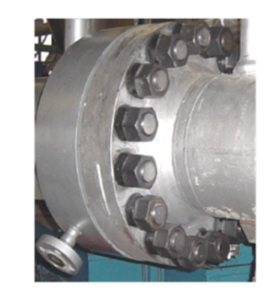
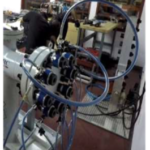
Analysis of Hydraulic Bolt Tensioners:
The analysis of hydraulic bolt tensioners involves evaluating the system’s performance and ensuring that it can meet the required specifications. This analysis typically includes evaluating the tensioner’s accuracy, repeatability, and reliability.
Accuracy:
The accuracy of a hydraulic bolt tensioner refers to its ability to apply the desired tension to the bolt accurately. This requires careful calibration of the load cell and hydraulic pump to ensure that the system can deliver the desired tension accurately. Measuring the Tensioning carried out in a bolt can be measured using an Ultrasonic Bolt Tension Monitor that uses ultrasound to measure change in length.
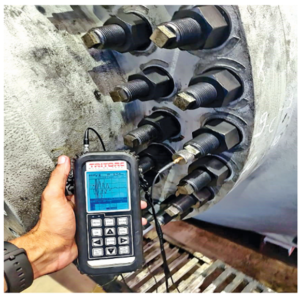
Repeatability:
The repeatability of a hydraulic bolt tensioner refers to its ability to apply the desired tension consistently. This requires evaluating the tensioner’s ability to maintain the same tension level when used multiple times. The repeatability of the tensioner is typically evaluated by measuring the tension applied to the bolt multiple times and calculating the standard deviation in a large sample of bolts.
Reliability:
The reliability of a hydraulic bolt tensioner refers to its ability to operate consistently over time without failure. This requires careful selection of materials, components, and design features to ensure that the tensioner can withstand the operating conditions and loads. The reliability of the tensioner is typically evaluated by performing various tests, including endurance testing and stress testing.
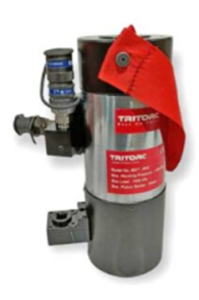
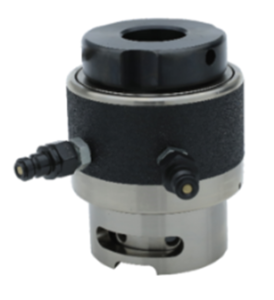
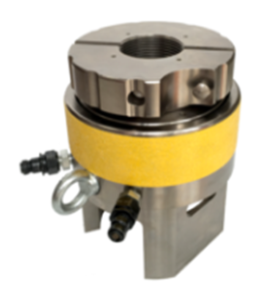
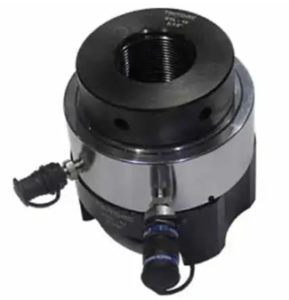
Conclusion:
In conclusion, hydraulic bolt tensioners are critical components in many industries, providing accurate and consistent tensioning of bolts in critical applications. The design and analysis of these tensioners require careful consideration of various factors, including the size and stroke length of the hydraulic cylinder, the accuracy and repeatability of the load cell and hydraulic pump, and the system’s overall reliability. By carefully designing and analyzing hydraulic bolt tensioners, engineers can ensure that they provide reliable and accurate performance in critical applications.
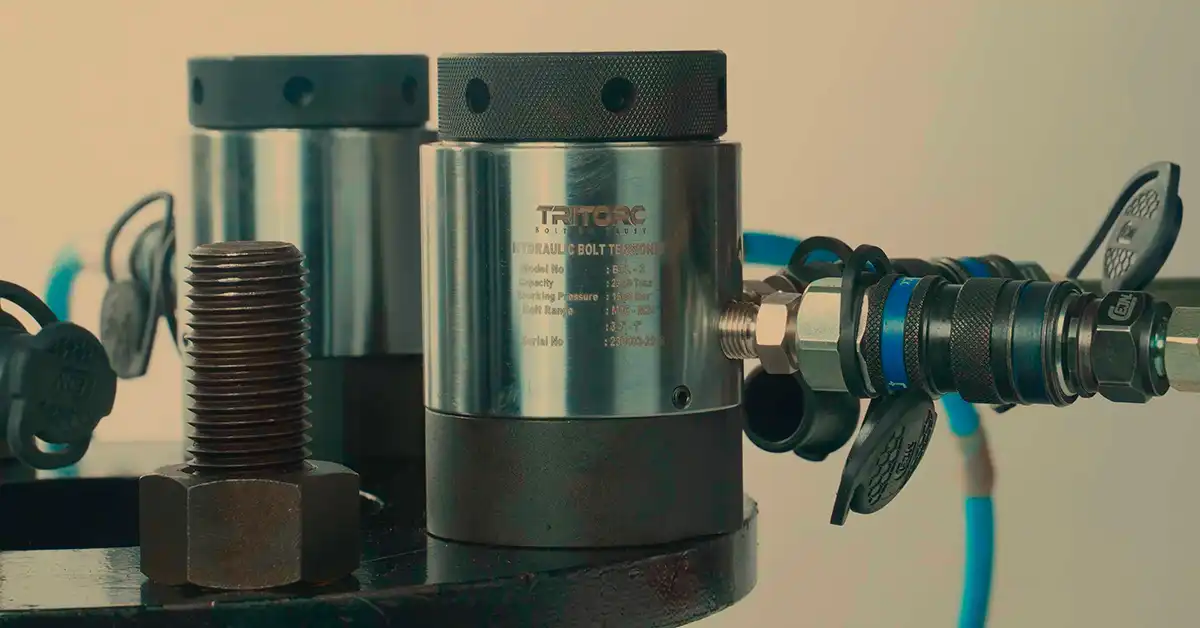
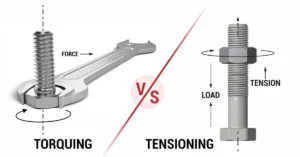
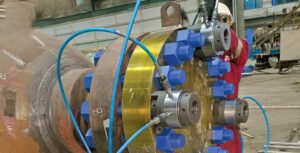
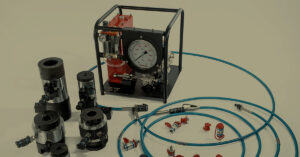
Leave a Reply